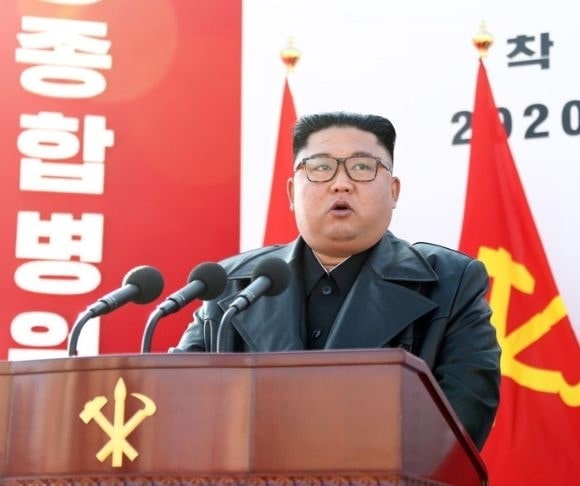Ferreting out what’s in Kim Jong Un’s mind is a challenge. Throwing down the nuclear gauntlet again seems to be one of his attempts to extort deference from the Free World. With geopolitical attention focused on the raging conflict in Ukraine and the 24/7 media coverage of Queen Elizabeth II’s passing, the political pariah hasn’t received much press. In the past, Kim has acted out to bring North Korea back to the spotlight. However, there is a troubling new twist to his efforts.
 The leader has pushed through legislation in the Democratic People’s Republic of Korea (DPRK) that allows pre-emptive nuclear strikes in case a state actor plans to attack or invade his country. “But the new law goes much further,” wrote Kelly-Ann Mills in the Mirror, “and gives permission to carry out preemptive strikes if they [North Korea] detect a possibility of an imminent attack by weapons of mass destruction,” for which Kim is likely to have a broad interpretation. Furthermore, other reporting suggests the DPRK is preparing to resume nuclear weapons tests, the first since September 2017, underscoring Kim’s warning that “his country will never abandon the nuclear weapons and missiles it needs to counter hostilities from the United States,” the Associated Press said.
The leader has pushed through legislation in the Democratic People’s Republic of Korea (DPRK) that allows pre-emptive nuclear strikes in case a state actor plans to attack or invade his country. “But the new law goes much further,” wrote Kelly-Ann Mills in the Mirror, “and gives permission to carry out preemptive strikes if they [North Korea] detect a possibility of an imminent attack by weapons of mass destruction,” for which Kim is likely to have a broad interpretation. Furthermore, other reporting suggests the DPRK is preparing to resume nuclear weapons tests, the first since September 2017, underscoring Kim’s warning that “his country will never abandon the nuclear weapons and missiles it needs to counter hostilities from the United States,” the Associated Press said.
North Korea Combines Nuclear Threats With Missile Tests
To emphasize Kim’s threats, the Pyongyang government launched 39 short- and intermediate-range missiles during 2022. The recent test on Sept. 25 was most likely in response to Vice President Kamala Harris’ visit to South Korea. The veep’s time in the Republic of Korea was not without its own controversy. During a speech there, Harris announced to the world, “So, the United States shares a very important relationship, which is an alliance with the Republic of North Korea. And it is an alliance that is strong and enduring.” Though arguably a gaffe, such egregious miscues by the number two executive in the US government sent a message to Kim that he may not be dealing with the American A-team.

Kim Yong Un (Photo by API/Gamma-Rapho via Getty Images)
Recently, North Korea launched a long-range missile that tracked across northern Japan, raising alarms in Tokyo. “A single intermediate-range missile was launched at 7:23 a.m. local time on Tuesday [Oct. 4] from the North’s Chagang province, bordering China, South Korea’s military said. The missile flew about 2,800 miles, hitting an altitude of roughly 603 miles, according to Japanese and South Korean assessments,” The Wall Street Journal explained. Not taking any chances, Japan’s government warned its citizens to take cover. The range of the North Korean Hwasong-12 missile, though not jeopardizing the US mainland, puts American military bases at risk as far away as Guam.
Biden Administration Responds to North Korea
The Biden administration’s response to Pyongyang’s menacing behavior has been to increase the frequency and level of combined exercises with South Korean forces. For the first time since 2018, the United States sent a Navy aircraft carrier for a South Korean port call. As “a show of force to send a warning to North Korea … USS Ronald Reagan and ships from its accompanying strike group arrived at a naval base in the city of Busan prior to joint drills with the South Korean military,” Fox News’ Landon Mion reported.
With North Korea’s nuclear and missile testing, as well as preparations for more, Kim is demanding attention from the United States and its regional allies and friends. It appears he is attempting to extort respect, but, equally important, his actions keep North Koreans in bondage to the notion they are under imminent threat of attack from the West. This constant internal fear drives DPRK citizens to consent to the sacrifices they endure and the harsh conditions under which they live. Meanwhile Kim’s behavior keeps regional tensions taut, propelling him and his country to center stage.
The views expressed are those of the author and not of any other affiliation.




